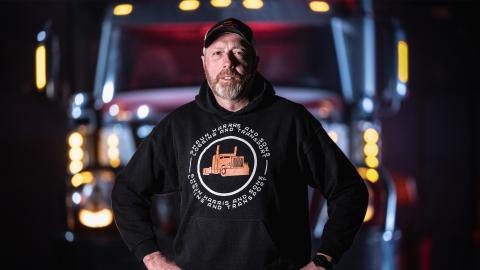Recap: 5 most dramatic moments from 'Royal Kill List' episode one
After the first episode of Royal Kill List aired on Sky HISTORY it's time to take a look back at some of its most dramatic moments. The explosive three-part documentary-drama tells the story of one of the most turbulent periods in British history.
Royal Kill List is the story of one man’s unquenchable desire for revenge. It follows King Charles II as he claims his position on the English throne and begins to hunt down the people responsible for his father’s death.
Featuring dramatic reconstructions and storytelling from three of Britain’s finest actors – Sheila Atim, Jared Harris and Joseph Fiennes – the series premiered Tuesday, 12th March on Sky HISTORY. It got off to a dramatic start with Charles II returning to Britain following the restoration of the monarchy and immediately getting to work on his plans for vengeance.
It’s a tale of espionage, power, loyalty and retribution, which covers events that forever changed the face of British politics.
The third and final episode of Royal Kill List will air Tuesday, 26th March. Sky and Virgin customers are able to catch up on demand now.
Here are five of the most dramatic moments that happened during episode one.

1. The execution of Charles I
The precursor to the entire series is the unprecedented execution of King Charles I. As the first and only time in history that a British monarch has been executed for high treason, it was the culmination of seven years of fighting between the Royalists and Oliver Cromwell’s Republicans, who wanted to overthrow the monarchy, during the English Civil War.
Royal Kill List began with a gruesome depiction of Charles I’s execution in 1649. Dressed all in white, the king lowered his head onto the chopping block and tensed before the executioner’s axe came crashing down. His decapitated head was then lifted in front of the crowd, much to the delight of the Republicans and the despair of the Royalists.
2. Charles II seeks revenge

In 1660, the monarchy was restored when Cromwell died after more than a decade of a military dictatorship. Charles II returned from exile and one of his first orders of business was to seek revenge on the men who signed his father’s death warrant. He ended up striking a deal with the help of his chief advisor, Edward Hyde, to execute seven of the Regicides and pardon the rest. The number was chosen as it was enough to make Charles appear strong without antagonising his opposition too much.
The Declaration of Breda sanctioned the execution of a handful of men and stated that William Prynne, recordkeeper at the Tower of London, would decide who would be executed. However, while Prynne was drawing up his list, Charles II grew more and more restless, his desire to avenge his father getting stronger every day. Once a copy of Charles I’s death warrant was discovered, the new king had the names of 59 men and decided he wanted to kill them all.
3. The battling brothers
Charles II’s most trusted ally was his younger brother, James, Duke of York. As a bit of a loose cannon and not as well versed in political matters as Charles, James let his emotions dictate his actions. He wanted to see his brother enact his perceived divine right of the king and execute as many people as possible. The pair’s relationship began to get strained as soon as James learned about the Declaration of Breda.
Another challenge to the brotherly bond was Charles II’s relationship with his mistress, Barbara Villiers, whose uncle, George Villiers, was the lover of James I, Charles II’s grandfather. Despite already being married, Barbara worked her way into the king’s inner circle and James believed she was the one who was really calling the shots. Tensions boiled over between the brothers during a game of tennis when James antagonised Charles by pointing out that Barbara was controlling him.
4. Edmund Ludlow: Charles’ most wanted

Edmund Ludlow was a former military general turned politician who was perhaps the biggest opposition to Charles II’s return. But as he saw support grow for the new king, he knew he would have to take decisive action before the death warrant was found. He initially tried to work with Charles, but his wife, Elizabeth, who was also a fierce political operator herself, was desperate to open his eyes to the danger he was in.
Eventually, upon the discovery of the death warrant, Edmund chose to go against his hardwired fighting instincts and fled the country. Charles II sent men overseas to hunt down Edmund and the Regicides who sought solace in other nations. While Edmund was still at large, there was still hope for the Republican cause.
5. The Act of Indemnity and Oblivion
The first episode of Royal Kill List draws to a close with 10 Regicides in custody. Once he got his hands on the fateful death warrant, Charles II passed the strikingly-named ‘Act of Indemnity and Oblivion’ that indicted those men and ordered them to die by being hung, drawn and quartered.
The first of what Charles II hoped would be many executions played out on screen. The men were hung, but not killed. Instead, they were prematurely cut down, disembowelled and emasculated (removal of penis and testicles) while still alive and forced to watch their organs being burnt in a fire. Finally, they were beheaded and quartered, and their remains were sent to the four corners of the kingdom. It was a bloody mess and served as a stark warning to the fleeing Regicides as to what awaited them if they were caught.














